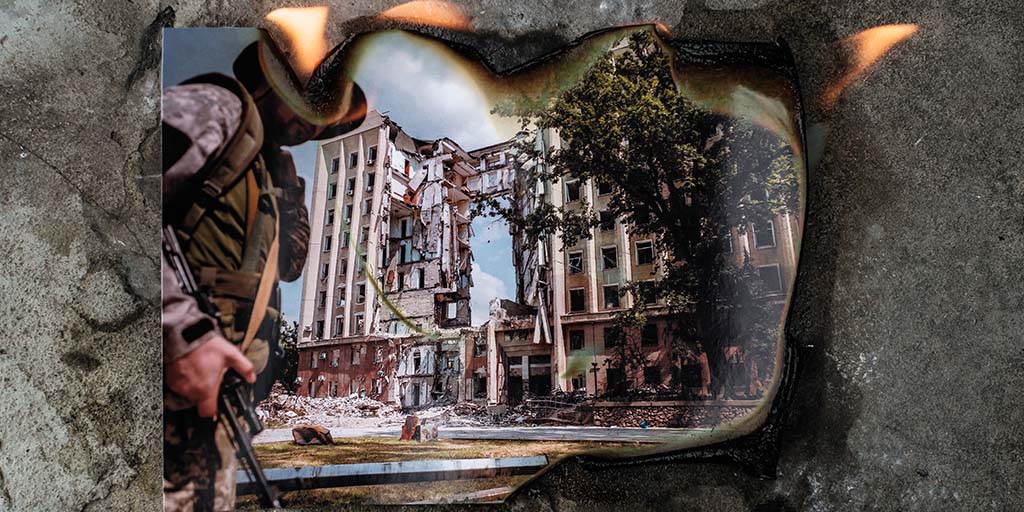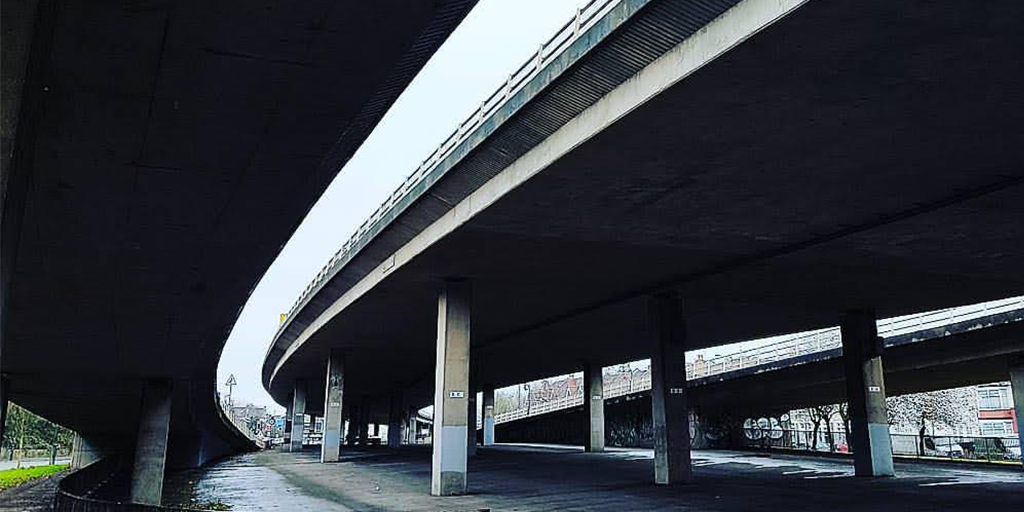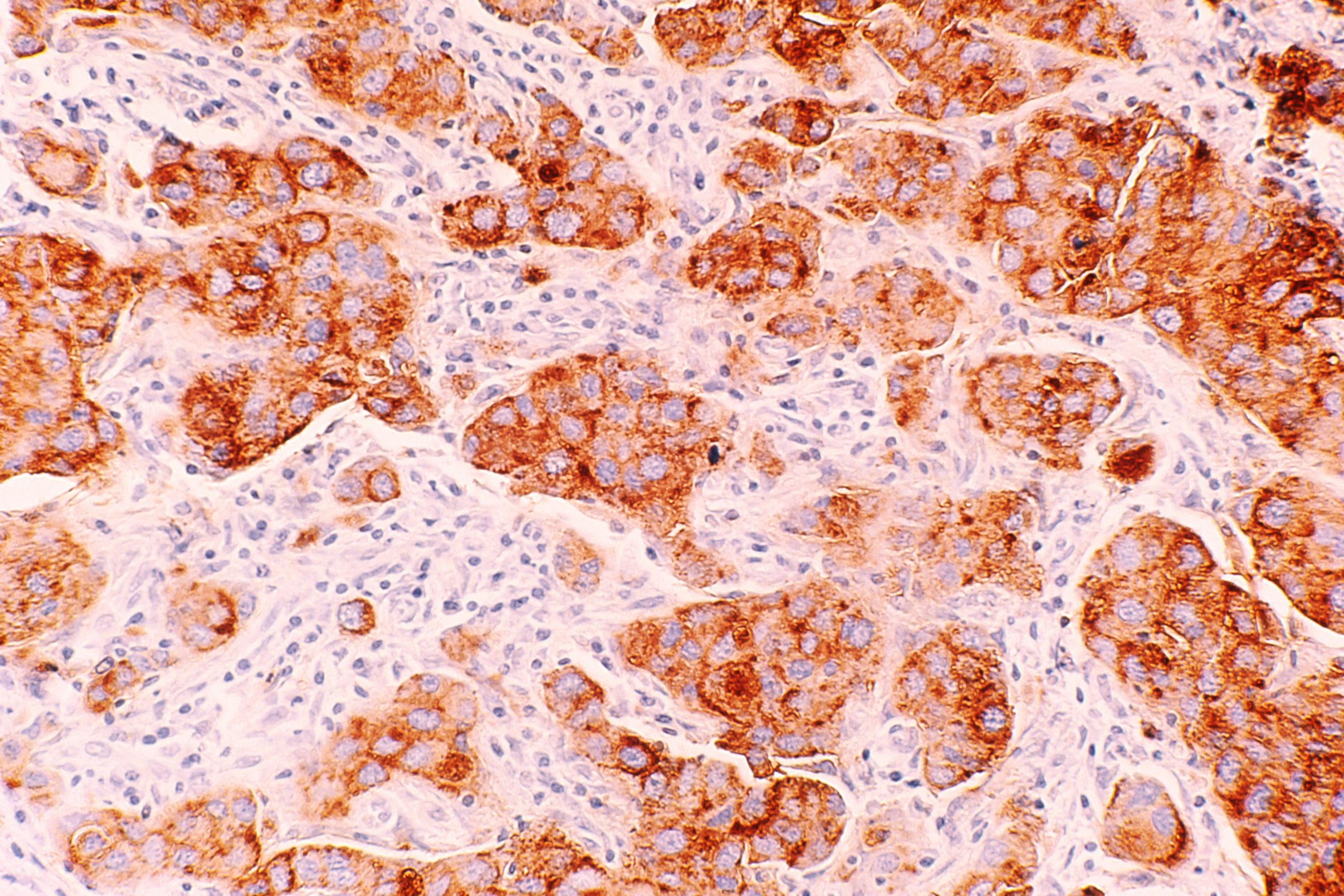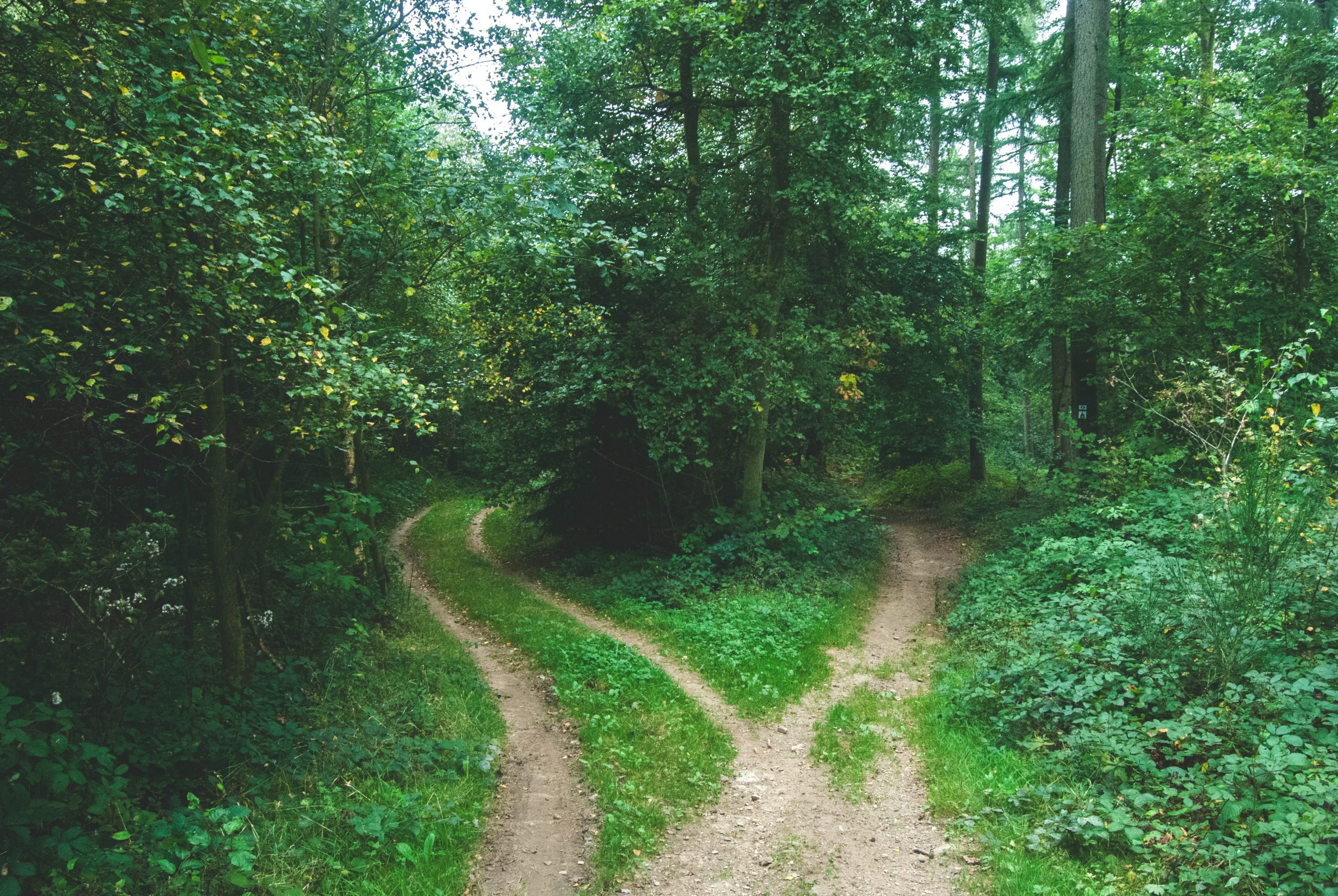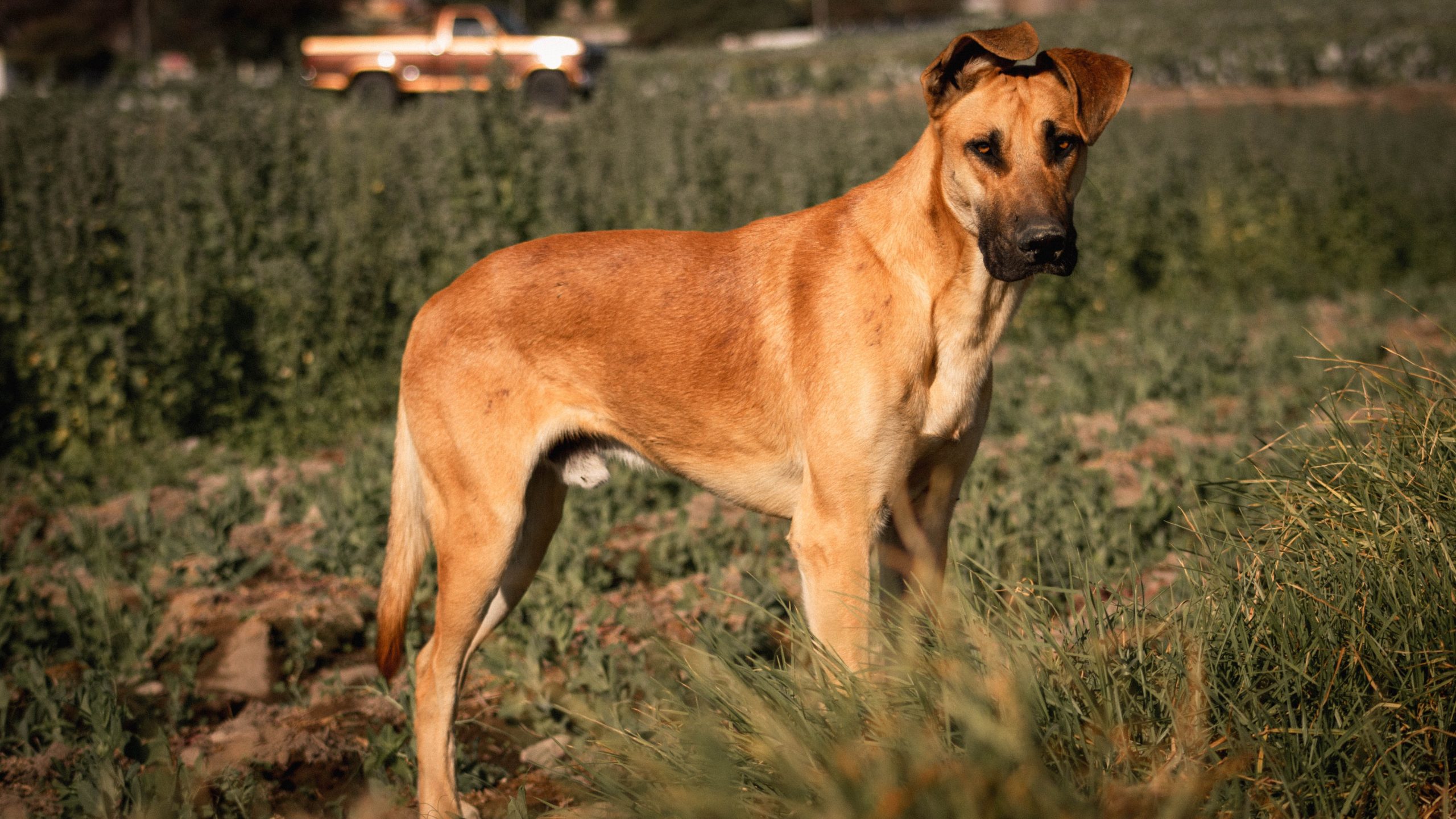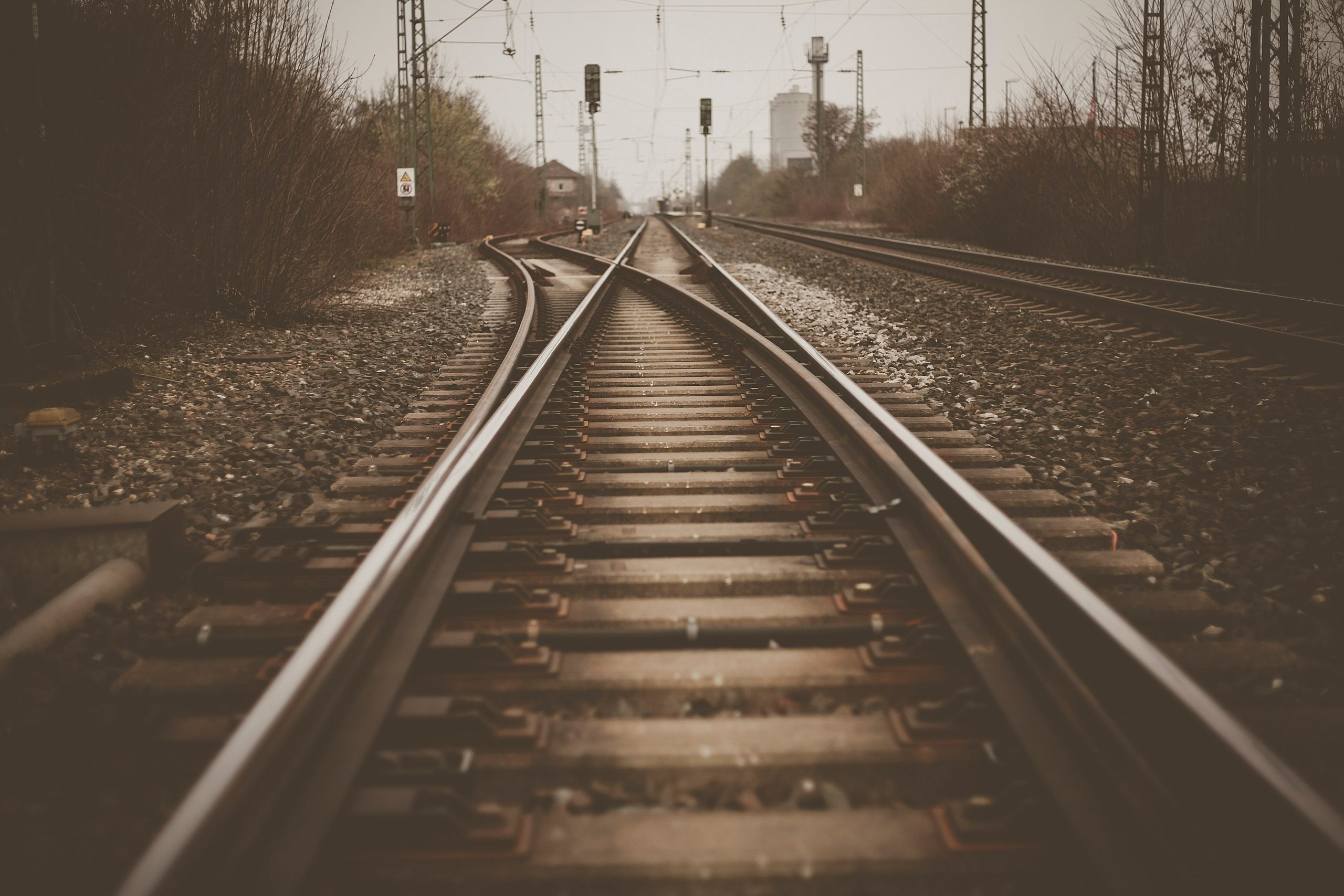Sofia Cheliak, Ukrainian Lottery: Ukraine Lab
Ukraine Lab is run by the Ukrainian Institute London in partnership with PEN Ukraine and Ukrainian Institute. It is supported by the British Council as part of the UK/UA Season of Culture. You can read the pieces in Ukrainian in Тиждень. Ukraine Lab pieces by Kateryna Iakovlenko and Jonathon Turnbull focusing on the environment have been published in The Ecologist, while the pieces tackling disinformation will appear in openDemocracy.
About Ukraine Lab
Sofia Cheliak, Ukrainian Lottery, (In Ukrainian)
Kris Michalowicz, Luhansk Stolen, (In Ukrainian)
War-time Lodgings
The small 900-square-foot apartment, built to accommodate one person, now housed five people: all had moved in here to free up their own homes to accommodate those who were forced to abandon theirs and flee into uncertainty. This was not an exception: divorced couples moved in together, long-estranged paramours did the same, relatives that had seen each other once before shared homes, and cats, dogs, and fish all got along just fine. People slept on mattresses, in sleeping-bags, on a couch, three to a double bed. But that was nothing: Ira had taken reservations for the spots on the floor of her apartment.
Anna looks up from her zoom meeting and gives me a hug that has become routine—the hug that says, “I am so happy that you exist and you are here right now.”
Maksym gives me the same hug and says, “Sofia, do a dance. We have a bottle of wine. Ira’s friend from Poland, the reporter, brought it.”
I sit down in the red armchair under the window, light up a cigarette, and realize that things are almost as they have always been. We’re about to have dinner, just like we used to, we can stop working for a bit, and perhaps, for the first time since it all began, speak in sentences longer than, “I’ve got three families from Donetsk, and I can house two, can you find room for the third?” We will have some illegal wine.
Please, Just Leave Us Alone
This was before the shortage of petrol, but after the ban on alcohol sales. Maksym picked me up from my office in his car an hour before curfew. He had heard that my guests from the East did not make it.
Maksym works in alternative education. Since the beginning of the full-scale invasion, he has been helping teachers and students set up learning in evacuation. He also takes humanitarian aid to the regions near the front. His car was shot at multiple times. It took him forever to find replacement glass, and for a while his very expensive vehicle sported a large hole taped over with scotch-tape. He has a deferment from the military service, but he is getting himself ready to go to the front. A saint.
During those days, the highway from Kyiv to Lviv was one single traffic jam. The family with a small child who were supposed to stay with me for three days decided to spend the night in a hotel hallway. They were lucky there was room for them in the hallway. To be alone in the beginning of the war meant two things: one, that you had an apartment (which was good), and two, that you were putting yourself in danger (not so good).
Alone, you might not hear the air-raid siren and die in a rocket strike.
Nothing had hit the city yet, but you were getting used to the idea that you were mortal. And that every day you were still alive was like winning a lottery: you got lucky.
The city would empty out about an hour ahead of curfew (at 22:00); during the day, it acquired the look of an impregnable bastion, ready to take the hit—sandbags and check-points everywhere. The boot of our car was like a mobile supply depot of a military unit. We had three bullet-proof vests, four helmets, pain-killers of various strength, chemical protection suits, tourniquets, Israeli bandages, a dozen of first-aid kits, two boxes of canned food, three canisters of petrol, and a ton of various smaller bits and pieces. The following day, all this was supposed to go to Kharkiv. All this was pulled together in half-a-day, as soon as my friend heard folks were leaving the next morning. You could get anything necessary on the front-lines in the city in those days. Our city became the main sorting point for equipment and humanitarian aid that flowed into Ukraine, while Ukrainians all over Europe were raising money and buying up gear. In a few days, you would not find a single bullet-proof vest or a tourniquet in Poland, and a week later Germany was similarly cleaned out.
In this manner, zig-zagging between check-points and wiring money to the military, we moved toward our Ukrainian dream: to be finally left alone, so we could just live our own life as an independent country.
Feminism in Ukraine Has Won
“It is official: Feminism has won. The girls are saving the country, and we are making dinner,” says my friend, Andriy.
He works in IT, and the war caught him on a business trip abroad. On the morning of February 24, the air space above Ukraine was closed and all flights canceled. Andriy traveled thousands of miles to get back, and finally crossed the border on foot. Men are prohibited from leaving the country until the end of the war. Andriy knew this but could not fathom not coming back. As soon as he returned, he went to the enlistment office, but was turned away.
“Someone has to make money to buy the drones,” they said. “We’ll call you if we need you.”
So: the three guys are making dinner while we are finishing work. Anna is negotiating with a group of international lawyers—we keep hearing the word ‘tribunal’ but politely ignore the conversation. Anna is a lawyer; one of the youngest to make partner at her firm. Before the war, she worked with business clients, but began taking on human rights cases in 2014. In most of these, she represented, usually pro bono, victims of political persecution, and she lobbied tirelessly for the release of Kremlin’s Ukrainian political prisoners. Since the beginning of the full-scale invasion, Anna began collecting evidence of war crimes–the evidence that will eventually help take russia to court for crimes against humanity and genocide.
Ira is on the phone all the time. “Yes, we have a home for you in Krakow, Witek will pick you up at the border… There’s a family waiting for you in Rzeczow, they are happy to put you up for three days, until we can arrange transport for you to Vienna or Prague, wherever you want…” Before this invasion, Ira was an art curator: she organised exhibits of Ukrainian art in Europe and brought the work of European artists to Ukraine. Over years, she amassed a vast network of contacts all over the world which was now very helpful in evacuating women, children, and the elderly away from the russian bombs and occupation.
I am prepping for my next broadcast. I call a young, successful and intelligent writer to invite him to join a national marathon tomorrow: a shared broadcast by the country’s biggest channels that would run for 24 hours. He holds a pause and then says, “The intellectuals can all fuck off, I’m going to the front, I won’t be here to talk,” and laughs confidently.
I know it is himself and his previous life he is telling to fuck off as he prepares to take up arms. I laugh hard back at him. Ira interrupts her flow of phone calls.
“It’s so funny, I now talk to the air-raid sirens like I talk to my alarm clock. I make a deal and go back to sleep.”
“Got it. We’ll wake you up.”
“Can’t I just sleep?”
“We won’t sleep, so you won’t get to sleep either.”
“Either that, or we’ll get hit, and that’ll be the end of us. It’s a lottery.”
An air-raid siren wails, and we go to the basement.
The Dreamers
The raid lasted just under an hour. We returned to the apartment. We are six: three girls and three guys. In our previous lives, we worked, went on Tinder dates, flew to Berlin for parties, and bought art. We were the generation who had no memory of the Soviet Union. We were practically children when we got involved in the Revolution of Dignity in 2013, when our nation’s leadership did something unacceptable: used force against unarmed protesters. At the cost of those first lost lives and our collective grief, we won the right to determine our own destiny—until the russian regime interfered, annexing Crimea and invading Ukraine’s East. It was some time then that we grew up.
With no experience but learning quickly, we became part of the Ukrainian Youthquake. We were into fashion and art, and spoke several languages. By the age twenty, we had mastered wine pairings and gone to the world’s most important art museums. In 2014, when war began in our country, we realised we were mortal—and fell deeper in love with life. We had successful careers in creative industries that we built fairly, from the ground up, on merit and with faith in the future of our country.
And now our greatest joy is a chance to have dinner together. The guys started the water for the pasta, mixed up the sauce, and washed the vegetables for the salad, (we are the bourgeoisie who eat fresh vegetables even during a war).
The dinner was ready. We poured out our one priceless bottle of wine. It came out to about six sips for each of us.
Miss Ukraine 2022
Andriy was still on the phone, and we decided to start eating with him. Most of us remembered we had not eaten for two or three days—and not because there was no food. On the contrary, a hoarder instinct awoke in all of us, the genetic memory of previous wars and Holodomor, and ever since the first news of the possibility of a full-scale invasion started coming last autumn, we all put an extra can or two into our shopping carts on each trip. We did not eat because our bodies pumped out so much adrenaline they could only function on coffee and cigarettes. The only time you remembered about food was when someone put a cooked meal right in front of you.
Ira spoke first.
“You know, I got out of the bath this morning and saw myself in the mirror for the first time since it started. I mean, I had looked before, but just to make sure I didn’t have toothpaste all over my face. This time, I actually looked at myself. I’m all ribs.”
“Don’t catastrophise things. After we win, ours will be the land of the models, the way they looked in the 90s—“heroin”, pardon me, “war-time” chic. We’ve got our very own time machine here.”
“Listen, I never believed it when women in the movies about the Second World War had these nice tidy hair-dos, and wore dresses, and red lipstick—but look at Sofia now: full make-up and perfect hair. It’s like there’s no war,” Maksym teases me.
I realise I had not washed my face since the broadcast, so I look like I’m dolled up for a party. When I became a broadcaster, I hated that slick hair, the heels, the make-up. Now I feel like I’m one of about ten women left in the city who wear make-up. I usually wash my face and pull my hair into a bun before I leave the office; I feel very embarrassed to walk down the streets with my face all painted. Today, I forgot to do that, too. But that’s his fault: he distracted me with his talk.
Hedonism Days
“They keep bombing Kyiv,” Ivan says. He is an artist, and thanks to Ira, his work is known around the world. His pieces can be found in institutional collections all over Europe. Since the beginning of the full-scale invasion, he designs interiors for the newly built shelters that house temporarily displaced people.
“Just think, less than a month ago, a few days before the full-scale invasion, I was dancing in a bar in Kyiv. Against the backdrop of the alarming news, we were joking that those were our last days of hedonism. I mean, it sort of turned out like that, but it was all in a previous life.”
A long silence as we open and scroll through the news. We read about the defense of Kyiv and Kharkiv, and Anna starts talking to fill the silence.
“I went and bought myself a piece of gold jewelry. I tell myself I could trade it for a loaf of bread, if it comes to that.”
“Ha-ha! And if it doesn’t, how are you going to explain it to the children you will have after the war? The fact that you bought it during the war?”
“Right, they’ll think you did it in between digging a trench and running around with a machine gun.”
“And next to her, Sofia, with her perfect curls, flitted from one trench to the next and wished her viewers a very good day…”
“I made a manicure appointment for next month: this is the only thing I managed to plan that far.” Anna at some point remembered the value of sustainable development, and determined to make plans not just for the day or the week, like everybody else, but for a month. We looked at her as if she were a mad prophetess.
The war turned out to be different from what we had imagined. We would hide in bomb-shelters—but then go to a newly opened restaurant whose owner kept buying automobiles for the front. We would buy clothes from Ukrainian designers—and know that, while making the profit they needed to keep funding their businesses, they would donate a portion of the proceeds to the military. We could make a manicure appointment—thus providing employment for a woman who had arrived on the previous evacuation train from the East. Our former lives with parties and receptions to be attended in cocktail dresses felt very distant, but everything we brought back we did for the Armed Forces of Ukraine and our victory.
“We’ll cancel it for you if we have to,” Maksym jokes. He means in case a random rocket hits the building where we are. We roar with laughter. Anna has just raised the stakes in the lottery.
Basic Instinct
“Well, my friends, I have had calls from all my exes. Every one of them. They worry about me, bless them,” Andriy says, with a touch of pride.
“Calling is nothing,” Ira laughs. “Mine was coming from the safety of Europe to rescue me out of Ukraine.”
“Well, shit! What did you tell him?”
“Told him to fuck off at first. Then I told him if he was coming anyway, our shelter needed some basic drugs. And that I was not going anywhere: this is my country, this is my home, and I’ll die here if I have to,” Ira says.
“Hey, Andriy, did you tell your exes how crappy your libido gets under air-raids?”
Even here, far away from the front-lines, we had forgotten about sex and sexuality. We put on the same clothes day after day because making a different choice required an effort. The chats on our phones exploded with messages. We wrote “How are you?” to friends from the cities that russians hit what felt like every minute. Certain words lost their significance. We knew we had to tell our friends, of all genders, “I love you” if that’s how we really felt. Love for one’s own, and hatred of the enemy—this is what helped us get out of bed in the morning (on those exceptional mornings when the air-raid sirens did not do it).
“I feel the opposite,” Anna says. “I really want to have sex with those guys in uniform and to have their babies. Only how am I supposed to have babies in the world where they won’t close the sky and children get used to sleeping in shelters, and all their games are about war?” She raises her eyes at us.
“I miss my son. I keep thinking of the day I put them on the train. My son and my wife left the country, and I won’t be able to see them any time soon. I cried on my way from the station. But they will live,” Ivan blurts.
Most people left because of the children. Women bundled infants in their warmest clothes and took them to the other side of the border. They crossed an imaginary line beyond which the sky was secured by NATO and wept at the despair of having left their homes. We don’t know who has it worse: we who had stayed or those who had left. To be on the other side of the border, near or far, is to live in a normal world, but without losing touch with our broken one. When you are ostensibly safe on the other side of that line, you feel every piece of news even more acutely. The women who left put their children above their own interests or mental health. They are alone in a foreign country where they cannot afford a nanny, and do not have their parents or a partner who could watch the kid while they go for a walk alone. Their lives revolve around their children and the news of casualties in their native cities. But to remain in Ukraine would have meant to put one’s child in danger. Most do not wish their children to play the lottery.
Adrenaline Roller-coaster Park
“If you are going to spread pessimism, I’ll kick you out of the apartment. Better let me show this video of how our nice Bayraktars blow up russian tanks. Look, there was a column of tanks—and now there is not.”
I look up with tears in my eyes.
“But what if we lose Kyiv? What if we never get Mariupol and Kharkiv back?”
The waves of adrenaline that made us capable of working two or three jobs and volunteer in-between would give way to deep pits of despair. Whenever that happened, the most important job was to support the person, to pull them out as quickly as possible. And then to keep working, working, leaving no opportunity for another fall.
“Even if they take them, we’ll get them back. Look, look: a nice little Bayraktar is flying through the sky… and there are fields below it, pretty summer fields…”
Boom!
“Feel better? If not, I’ll give you my wine. These six sips are not going to make a difference.”
“Thank you, a little better. I can’t take your wine.”
We watched a lot of russian content, too, to understand what people there were concerned about. It made us sick, but we could not stop. All of us at least read russian, and this gave us the tool to, let’s be frank about it, locate some hope that their society would organise, would protest, that they would begin fighting the regime from inside while we battled it at the front. Our hopes were in vain. Instead, we saw Instagram stories about the pain of sanctions (are you serious?) and threats to our President.
We grew up very early, just like the majority of our compatriots. While people of our age out in the West spent time wondering where they would apply for college after a few gap years, we were managing enormous projects and founding successful businesses. After the Revolution of Dignity, we learned very well that we needed to live life to the fullest and take responsibility for our every action.
We finished the food and the wine. It was a few minutes before midnight—we went to bed.
The Ukrainian Dream
The other day a well-known writer asked me whether I knew how to build my life from now on.
I realised I did not. I cannot plan or dream; I don’t know whether I will be alive tomorrow. But we are all certain that none of this is in vain. We are not afraid at all. We, young, beautiful, and accomplished, slept three to a bed that night. Yes, we just slept. We spent all our savings on assistance to the Ukrainian military. We worked twelve-hour days for our Ukrainian dream. Each of us, curiously, had something unique in mind, but this did not matter. We wanted one thing: for the russians to leave us alone so we could go on developing our careers, starting families, and renovating our homes not as a means of dealing with obsession but because we were confident no enemy rocket would strike it the next day. All of this is yet to come—when russia finally leaves us alone.
In the early hours of the morning, the air-raid siren sounded, but we decided to ignore it. Rockets did not hit Lviv that day; we survived, and we had one more day to be young.
Translated by Nina Murray
Sofia Cheliak is programme director of Lviv BookForum as well as a TV host, cultural manager, translator from Czech into Ukrainian, and PEN-Ukraine member.
Please note: since Russia’s full-scale invasion, many Ukrainians and supporters have refused to capitalise the name of the aggressor state and its people. This piece uses lower case in accordance with the author’s preference.
